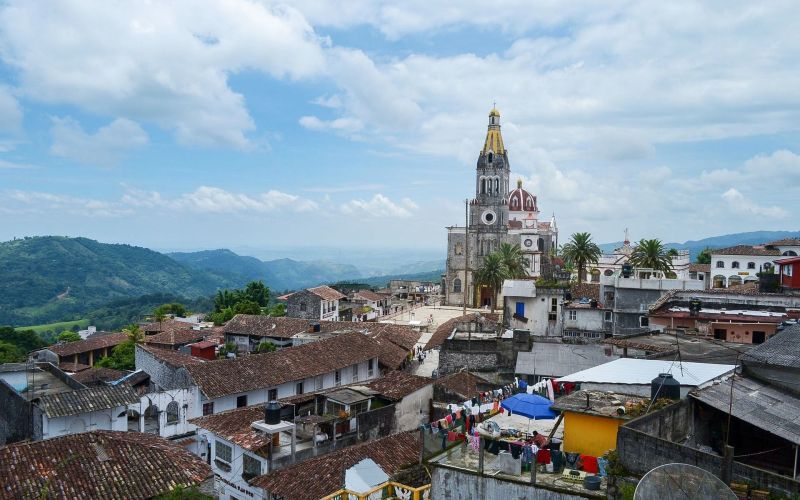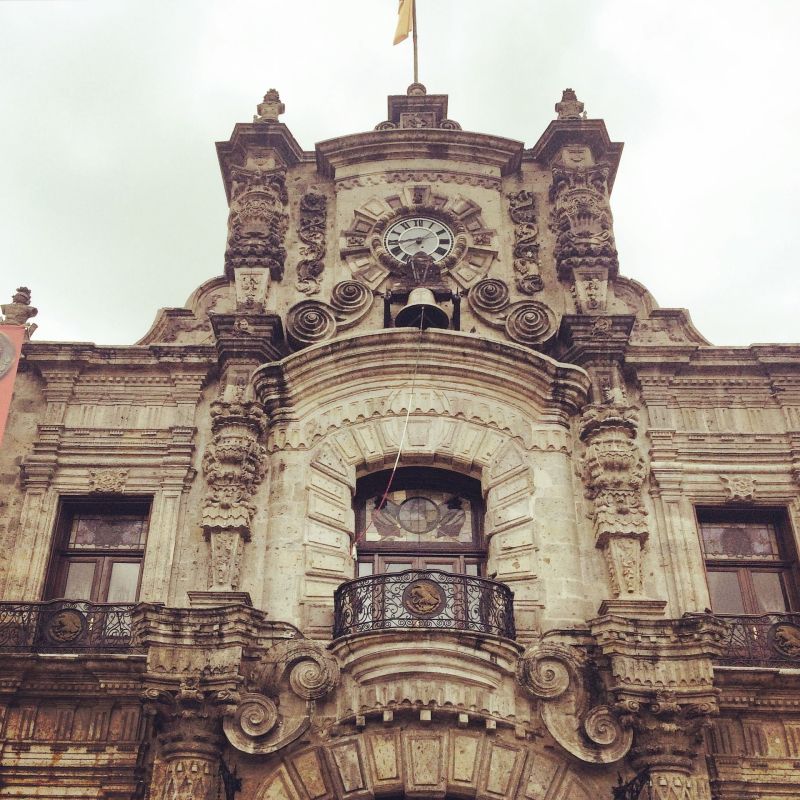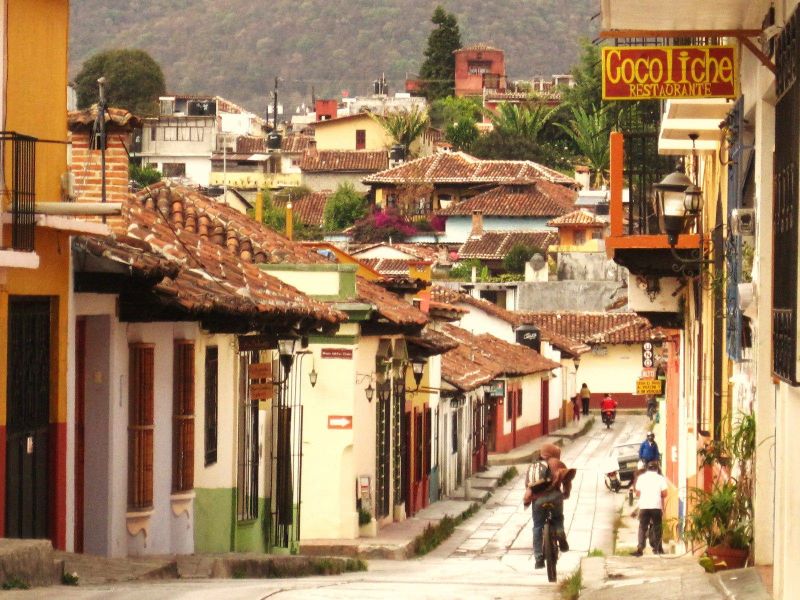When talking about traveling to Mexico, many will think about such destinations as Cancun or Los Cabos. Unless you are a hardened traveler, you might not even know other special destinations in Mexico, especially if they are not by the beach. However, Mexico is full of incredibly rich history, culture, gastronomy and architecture – you just need to open your eyes. This friendly, magical country is waiting for you to be discovered.
Here are our top 15 destinations in Mexico that have something for everyone – from the best beach destinations, to breathtaking colonial towns, vibrant cities, mountains, valleys and ancient civilizations.

Taxco, located 160km outside of Mexico City, impresses from the first view – white buildings, dramatic cliffs and colonial architecture enchant everyone who visits this cozy south-central Mexican “city of silver.” New buildings must fit in with the old town style, so the town captivates with typical architecture and atmosphere. Cobblestone streets lead into pretty squares adorned by Baroque architecture, and its Templo de Santa Prisca is one of the Baroque masterpieces. Hop on a cable car that will take you 173 meters above town, and admire all the charm to the fullest. It’s all surrounded by silver-mining mountains, where silver deposits were first discovered in the 16th century. Silver with Aztec motifs is a big draw for visitors in Taxco that are looking for authentic Mexican souvenirs.

Ixtapa and Zihuanatejo are paradise-like beach towns, located by the ragged coast of the Pacific Ocean that have something for everyone. They offer an easygoing lifestyle, charming Mexican atmosphere and breathtaking beaches that are great for surfing, diving or snorkeling. The two towns are quite different. Ixtapa combines modernity, luxury, sleek architecture and elegant beachfront hotels. It has a beautiful marina with upscale seafood restaurants, and offers such activities as horseback riding, snorkeling in the rocky coves of Isla Ixtapa or fishing. Zihuanatejo, on the other hand, is known for authentic Mexican charm and tranquility. Its cobblestone streets are dotted with artists’ studios, restaurants, bars and boutiques, while the waterfront sidewalk is a perfect place for a romantic evening stroll, while admiring striking sunsets. Zihuanatejo has a number of different beaches, each with its own character, from casual to ultra-chic.

Puebla is the fourth-largest Mexican city, which is a treasure land of Mexican artistic and cultural heritage. The Spanish occupied Puebla in 1519, killing most of Aztec natives and triggering the fall of the Aztec empire - many remaining ruins can be found throughout the state. Due to propagation of the Roman Catholic religion by the Spanish, the city now has numerous churches in the historical center and a stunning cathedral. More than a thousand colonial buildings are adorned with the Talavera – famous local painted ceramic tiles. Puebla is also known for its culinary traditions. Famous dishes are chiles en nogada (a poblano chile that is stuffed with meat, fruits and nuts and topped with walnut cream sauce and pomegranate seeds), Mole Poblano or tacos arabes that influenced by the Lebanese heritage. Once one of the most conservative and Catholic Mexican cities, Puebla is shaking its colonial past. The city’s sidewalk cafes are enchanting and the art scene is thriving.

Mexico City is a flourishing center of Mexican culture, fashion, art, business and gastronomy. The city’s cosmopolitan vibe is felt on every corner, and there is no lack of new, trendy places opening each week or month – be it a new fashionable restaurant, boutique fashion store or a luxury apartment building. Art Deco charm, modern museums, world-class gastronomy, booming nightlife and vibrant expat scene are some of the things make it one of the most exciting Latin cities. The multi-layered history can also be felt and touched, from pre-Hispanic to colonial to modern architecture. You will also see big contrasts – between luxury and poverty, modern architecture and ugly housing, but all that makes Mexico City what it is.

Mexico's second city is also the city of an eternal spring. Climate here is reliable, as it’s only slightly cooler in the evenings. A former 16th-century trade settlement, Guadalajara still has the vibe of traditional, somewhat conservative city. It’s also the city of contrasts: vast, tree-line boulevards are dotted with colonial mansions built in French Baroque style, while the city also has a more traditional Mexican feel - the town is known for clay ceramics, mariachi bands, wide-brimmed sombreros, local hat dance and rodeos (charreadas). However, there is also a lot of movement in the contemporary art scene, with many new galleries opening and artists moving to Guadalajara from Europe and the U.S. Then there are modern chefs, who are re-interpreting local culinary delicacies. The hip Chapultepec neighborhood is dotted with trendy restaurants, coffee shops and nightclubs. The upscale Tlaquepaque and traditional Tonalá neighborhoods are great for traditional folk shopping. Of course, the historical center will enchant with its gorgeous Cathedral and squares with limestone buildings.

Puerto Vallarta became world-known when the world’ hottest couple of the time, Elizabeth Taylor and Richard Burton, came here on vacation. The city offers over a 100 km of beaches and bays, as it sits at the center of one of the hemisphere's biggest and deepest bays, Bahía de Banderas. You can indulge in the city’s culinary, artistic and sensory pleasures, and can also use it as a starting point for other beaches and more remote Mexican Pacific towns.

Guanajuato breathes rich colonial history, and is often compared to the Spanish city Toledo. Its steep hills and winding alleys are best explored on foot, and its historic center is a maze of narrow cobblestone streets. From either side of the Callejon del Beso (Alley of the Kiss), the houses are so close together that lovers standing on opposite balconies are able to embrace. Get lost in its narrow streets, taste traditional food and enjoy life go by in one of the sidewalk cafes.

San Miguel de Allende is a real jewel in the middle of Mexico that leaves visitors under a magic spell. Designated UNESCO World Heritage site, it might be the most picturesque town of Mexico. It draws travelers with its typical buildings, painted in bright colors of a desert sunset: ocher and sienna, deep orange and clay red. San Miguel’s historical center is well-preserved, dating back to 17th and 18th centuries, surrounded by winding cobblestone streets, leafy terraces, and sumptuous interiors. This town is also known as one of the premier art destinations in Latin America, with multiple galleries, art shows and visible creative vibe. The best way to see San Miguel is to walk its cobblestone streets, get lost in its courtyards, stop by local restaurants with charming patios, and enjoy the romantic views or sounds of mariachis. A local festival can suddenly transform the main plaza into a place adorned with colorful flowers, full of local vendors, arts and music. Sometimes, two or three bands will be playing next to each other, and people, young and old, will be dancing on the street.

San Cristóbal de las Casas is another charming colonial Mexican town that lies in a green valley 2,100m (7,000 ft.) high. Its white stucco walls and red-tile roofs, cobblestone streets and narrow sidewalks attract many admiring travelers. 16th-century priest Fray Bartolomé de las Casas was the town's first bishop and spent his life protecting the indigenous peoples. The city is surrounded by the villages of Mayans – natives with a great variety in language, dress, and customs. They come down from the nearby mountains to sell their authentic goods in the city’s streets and squares.

Los Cabos, one of the world’s most famous vacation destinations, is the name of two Mexican towns—Cabo San Lucas and San José del Cabo—located at the end of Mexico's Baja Peninsula. Here, the ocean meets the desert, the climate is pleasant year-round, and majestic mountains crown the beauty of the scenery. The two towns are also very different. San José del Cabo is a culture-minded and trendy, with an array of galleries and elegant boutiques. Meanwhile, Cabo San Lucas is louder and fun-loving: it has a bustling downtown with a marina and party bars. Thanks to the proximity to Los Angeles, Los Cabos attracts many celebrities - Jennifer Aniston, George Clooney and many others vacation here frequently. But Los Cabos isn’t just A-list gloss. The 20-mile road between the two towns is lined with stylish resorts, trendy restaurants, great fishing, sun-drenched beaches and dramatic rocks that make for fantastic views.

The colonial town of Oaxaca, separated from the Pacific Ocean by mountains (don’t attempt the drive to the coast – the mountain roads are quite dangerous), is becoming the artistic capital of Mexico. It’s drawing artists from around the country with colorful art galleries and indigenous folk art, such as weavings, local black pottery and other handicrafts. The restaurants serve gourmet cuisine and use native ingredients – make sure to try pumpkin blossoms or cactus paddles. The city’s town square is completely renovated, including recently redone Teatro Macedonio Alcalá, a Belle Époque theater. The rainy season in Oaxaca finishes in September, but the artistic soul of the city is always shining.

The up-and-coming area by the Mexican Pacific coast, Riviera Nayarit offers an extensive list of activities. There are signature golf courses, luxury SPAs, deep sea fishing, sailing, diving, surfing as well as whale watching and more. Here, you won’t be overwhelmed by other vacationers – and the choice is yours about how you will spend your vacation. You can stay at one of the beautiful all-inclusive resorts, or can enjoy more of the local vibe. For example, the small town of Sayulita, once a fishing village, is now a trendy surf spot that attracts vacationers and offers a nice party scene. San Francisco is the next town over – it’s also known as San Pancho. It offers spectacular surfing, and an extremely laid-back vibe. When you get tired from sunbathing, there’s a lot more to Riviera Nayarit – you can visit the jungle, lakes, and mountains.

Once a hippy beach town on the idyllic Mexican Caribbean coast, Tulum is now the place of green juice-sipping and yoga-attending crowd and a chic beach destination. Here, however, chic means eco-chic. Many beach boutique hotels use solar panels and rain water, restaurants serve delicious creations from local organic products and local shamans invite to temazcals (Mayan sweat lodge) to purify body and soul. Tulum’s spectacular beaches – with sugary white sand, turquoise water and fresh breezes – make it one of the top beaches in the world. Besides its gorgeous beach, Tulum also has an up-and-coming downtown, Mayan ruins perched on a cliff, Sian Ka’an biosphere reserve, secluded fishing village of Punta Allen and much more.

The capital of Yucatan, Merida is a city of pastel-colored mansions and a vibrant, large historical center of Mexico. It’s also a city unlike any other in Mexico. Founded in 1542, Merida was built on top of the Mayan City of T'ho, and Mayan presence is still very much alive. In 1800s Yucatan had separated from Mexico and at one point it was the center of Maya rebellion. In the same century Merida had a period of prosperity as the world's leader in henequén (sisal) production. Today it’s a cosmopolitan city where different periods of history and cultures blend into a harmonious mix. The city is famous for the colonial beauty of its streets and buildings, where rich past merges with today’s modernity. Stroll around its Cathedral sqaure, and get some taquitos of at the local market and sit down to people-watch. Merida’s gastronomy is a mixture of Mayan and Mexican cuisines, known for such dishes as tamales or lime soup. Due to its somewhat isolated geographical location and strong Mayan culture, the citizens of Merida consider themselves to be Yucatecans above being anything else. Wonder outside of the city, and you will find yourself in the land of ancient haciendas, small Mayan towns, pink landscapes full of flamingoes, mangroves, cenotes (sinkholes) and underground caves.

Chiapas state is undoubtedly one of the most beautiful places in Mexico. It’s blessed with breathtaking nature, Mayan heritage and colonial towns. Here you will find the second-largest indigenous population in the country, so and Mayan traditions are still very alive. Chiapas became part of Mexico only in 1824, and a strong indigenous identity remains. Local Mayans are still using about half a dozen of Maya languages and tropical rainforest full of birds, hidden waterfalls, high-altitude pine forests and a Pacific coastline. Mayan ruins, including some of the best archaeological sites in Mexico, are scattered around the lush jungle. This gives amazing opportunities for outdoor activities and unforgettable exploration.










